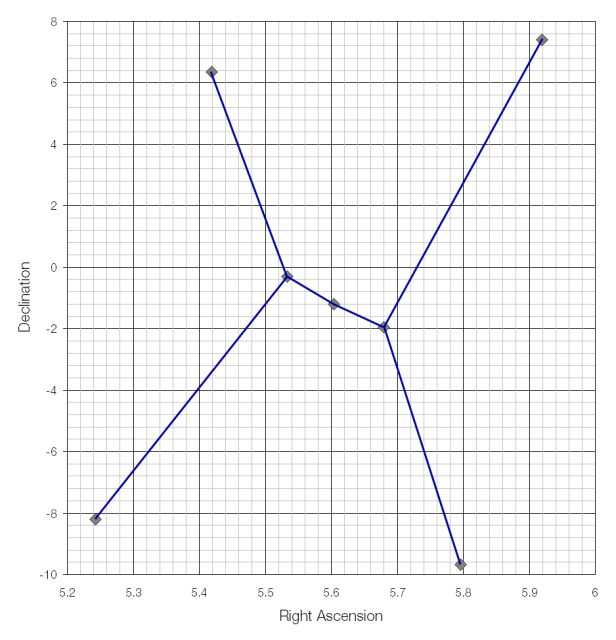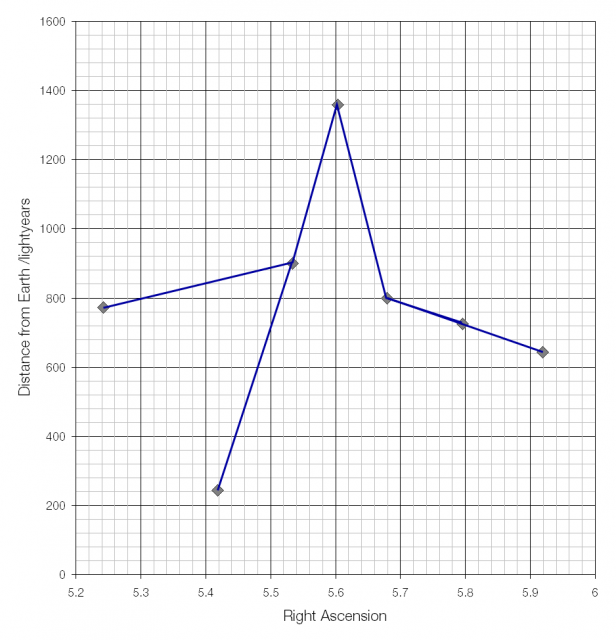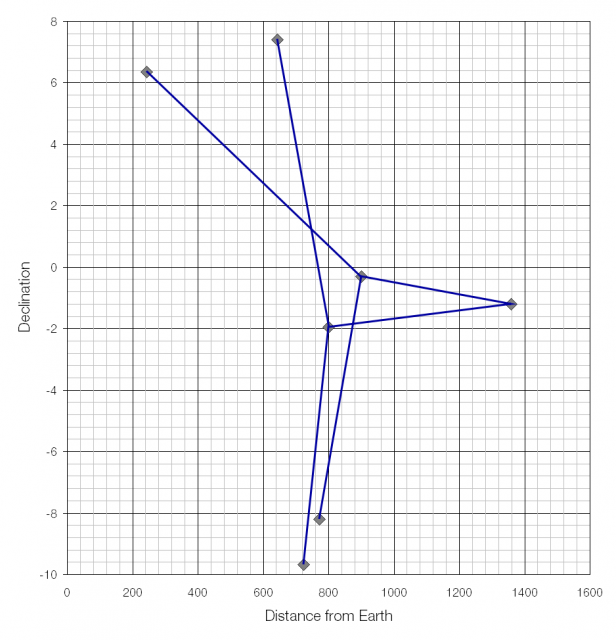You are probably familiar with the constellation of Orion (The Hunter), in particular with the asterism that makes up Orion’s Belt.
Because of the way the right ascension data is plotted the images shown here are how they would appear to a distant observer looking at Orion towards Earth.
Because stars are so far away we tend to think of them as being painted onto a surface at a fixed distance – “like a huge picture painted on the sphere of the sky”. But if you look at the stars in three dimensions then Orion looks very different.
From above it’s difficult to recognise Orion’s shape as the lines connecting the two rightmost stars (Betelgeuse and Saiph) to the rightmost star of Orion’s belt (Alnitak) overlap:
From the side the shape is more obvious. Alnilam, the middle star of Orion’s belt is by far the furthest star, more than 1300 light years away from Earth:
This post was inspired by an arXiv paper* by Dr Daniel Brown from the School of Science and Technology at Nottingham Trent University. You can download the data I used as an Excel spreadsheet (.XLS, 29 kB).
* Daniel Brown (2011) “The Orion constellation becomes installation: An innovative three dimensional teaching and learning environment”, arXiv:1110.3469v1 [physics.ed-ph].


